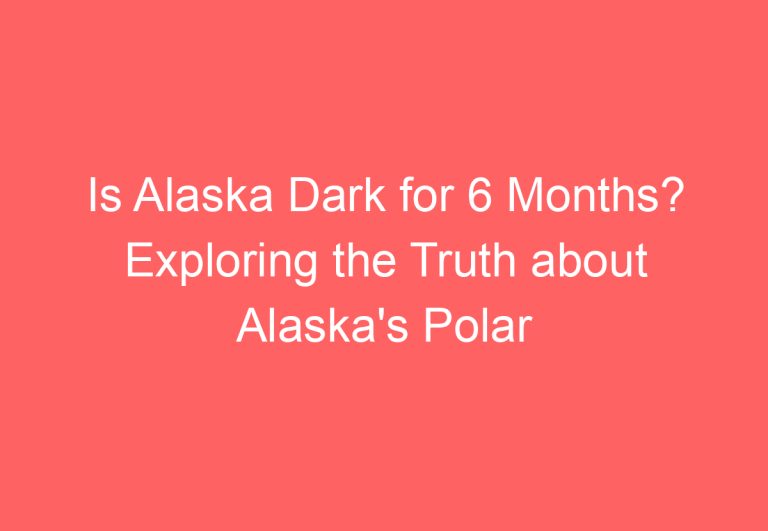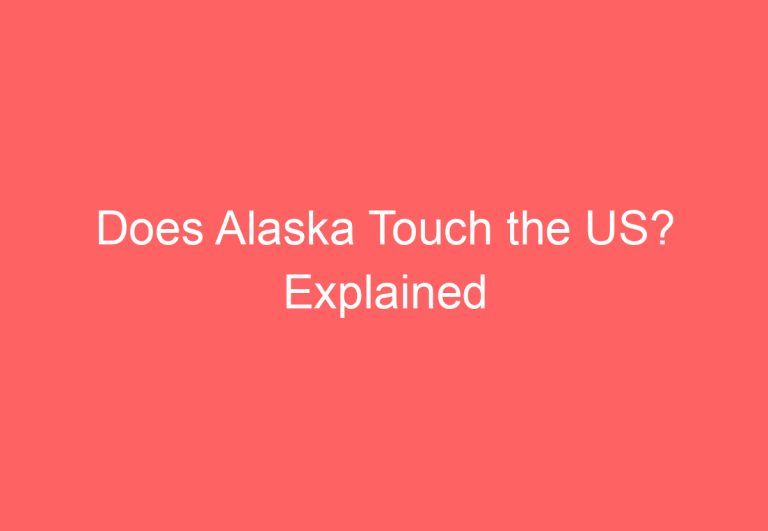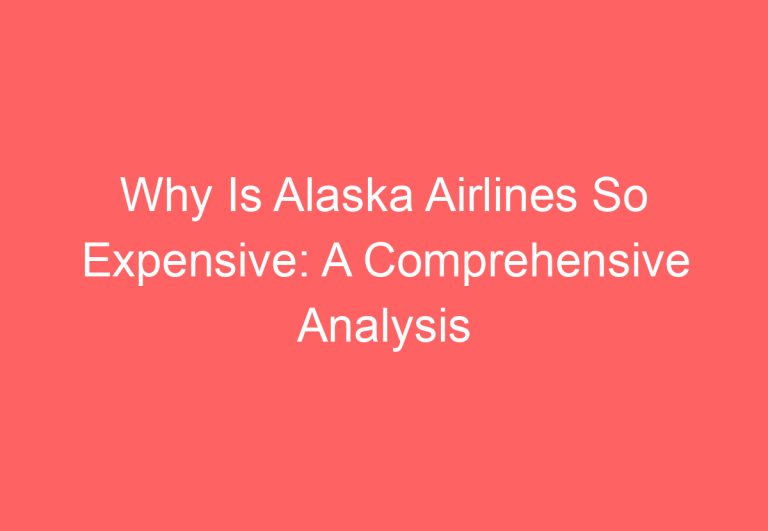Is Alaska Attached to Canada? Exploring the Geographical Relationship between the Two North American Regions
Alaska is a state in the United States of America that is located in the extreme northwest corner of North America. It is bordered by Canada to the east and shares maritime borders with Russia to the west. The question of whether Alaska is attached to Canada is a common one, and the answer is both yes and no.

On the one hand, Alaska is physically connected to Canada through the Alaska Highway, which is a major roadway that runs from Dawson Creek, British Columbia to Delta Junction, Alaska. This highway is the only land route that connects Alaska to the rest of the United States, and it passes through Canada for a distance of over 1,500 miles. However, despite this physical connection, Alaska is not officially attached to Canada in a political or territorial sense.
Alaska became a U.S. territory in 1867 when it was purchased from Russia for $7.2 million. It was later admitted to the Union as the 49th state on January 3, 1959. While Alaska shares a long border with Canada, it is not part of Canada and has its own distinct government and legal system. Despite this, Alaska and Canada have a close relationship and cooperate on a variety of issues, including trade, tourism, and environmental protection.
Geography and Boundaries

Physical Geography
Alaska is the largest state in the United States, located in the northwest corner of the North American continent. It is bordered by the Canadian province of British Columbia to the east and the Yukon Territory to the northeast. To the west, Alaska shares a maritime border with Russia, and to the south lies the Pacific Ocean and the Gulf of Alaska. The Aleutian Islands extend southwest from the mainland towards Russia, marking the westernmost point of the North American continent.
Alaska’s geography is diverse and includes mountains, glaciers, forests, tundra, and coastline. The state has several major mountain ranges, including the Alaska Range, the Brooks Range, and the Coast Mountains. The highest peak in North America, Mount Denali (also known as Mount McKinley), is located in the Alaska Range. Alaska’s coastline stretches for over 10,000 km, and its waters include the Bering Sea, the Chukchi Sea, and the Beaufort Sea.
Borders and Adjacent Territories
Alaska’s borders and adjacent territories are an important aspect of its geography. The state shares a land border with Canada to the east, but the exact location of the border has been the subject of dispute in the past. The Alaska-Canada border was established in 1903 by the Boundary Commission, which was tasked with resolving the boundary dispute between the United States and Canada. The boundary follows the 141st meridian west from the Arctic Ocean to the summit of Mount St. Elias, and then follows the crest of the Saint Elias Mountains to the Gulf of Alaska.
To the west, Alaska shares a maritime border with Russia, which lies across the Bering Strait. The two countries have a long history of contact, trade, and conflict, and the maritime border was established in 1990 by the U.S.-Soviet Maritime Boundary Agreement. The border follows a line equidistant from the shores of Alaska and Russia, and includes the disputed Diomede Islands.
In summary, Alaska’s geography and borders are complex and diverse, reflecting its location at the edge of the North American continent and its history of contact with neighboring regions. The state’s physical geography includes mountains, glaciers, forests, tundra, and coastline, while its borders and adjacent territories include Canada to the east and Russia to the west.
History and Governance

Historical Context
Alaska, the largest state in the United States of America, was once part of the Russian Empire. The territory was sold to the United States in 1867 in a deal known as the Alaska Purchase. The purchase was made for $7.2 million, which at the time was considered a bargain. The acquisition of Alaska was seen as a strategic move by the United States to gain control over the Arctic Circle and the Beaufort Sea.
During the late 1800s, Alaska was the site of a gold rush, known as the Klondike Gold Rush. The discovery of gold in the Yukon Territory in Canada led to a dispute over the boundary between Alaska and British Columbia. The dispute was resolved by a tribunal established by the Anglo-Russian Convention of 1907, which established the boundary between Alaska and British Columbia.
Modern Governance
Today, Alaska is governed as a state of the United States of America. The state has its own constitution, which was adopted in 1956, and elects its own governor and state legislature. Alaska is located on the northwestern edge of Canada, but it is not part of Canada. The reason for this is that Alaska was purchased by the United States from Russia in 1867.
During World War II, Alaska played a strategic role as a base for the United States military. The state’s proximity to Russia made it an important location for monitoring Soviet activity during the Cold War. Today, Alaska is known for its natural beauty and abundant wildlife, as well as its rich history and unique cultural heritage.
Frequently Asked Questions

Why is Alaska part of the U.S. and not Canada?
Alaska was originally part of Russia until 1867 when the United States purchased it for $7.2 million. At the time, Canada was still part of the British Empire, and the U.S. was expanding its territory westward. The acquisition of Alaska was seen as a strategic move to secure U.S. interests in the Pacific, and it was not considered part of Canada.
Can you drive to Alaska from the United States through Canada?
Yes, it is possible to drive to Alaska from the United States through Canada. The most common route is the Alaska Highway, which begins in Dawson Creek, British Columbia, and ends in Delta Junction, Alaska. The highway is approximately 1,390 miles long and takes about 2-3 days to drive.
What geographical feature separates Alaska from Canada?
The Yukon River separates Alaska from Canada in the east, while the Beaufort Sea and the Arctic Ocean separate Alaska from Canada in the north. There is no physical land border between Alaska and Canada.
How is Alaska geographically connected to the continent?
Alaska is connected to the continent by a narrow strip of land called the Alaska Peninsula, which extends from the mainland of Alaska towards the Aleutian Islands. The Aleutian Islands are part of the Ring of Fire, a region of intense volcanic and seismic activity that extends around the Pacific Ocean.
Why did the U.S. acquire Alaska instead of Canada?
The U.S. acquired Alaska from Russia in 1867 because it saw the territory as a strategic asset in the Pacific. The U.S. was expanding westward at the time, and Alaska was seen as a way to secure U.S. interests in the region. Canada was still part of the British Empire at the time, and the U.S. did not want to risk a conflict with Britain by trying to acquire Canadian territory.
What are the travel requirements for crossing between Alaska and Canada?
Travel requirements for crossing between Alaska and Canada vary depending on the mode of transportation. For driving, U.S. citizens do not need a passport to enter Canada, but they do need a valid form of identification, such as a driver’s license. Non-U.S. citizens will need a passport and possibly a visa. For air travel, all passengers will need a passport. It is important to check current travel requirements before crossing the border.






